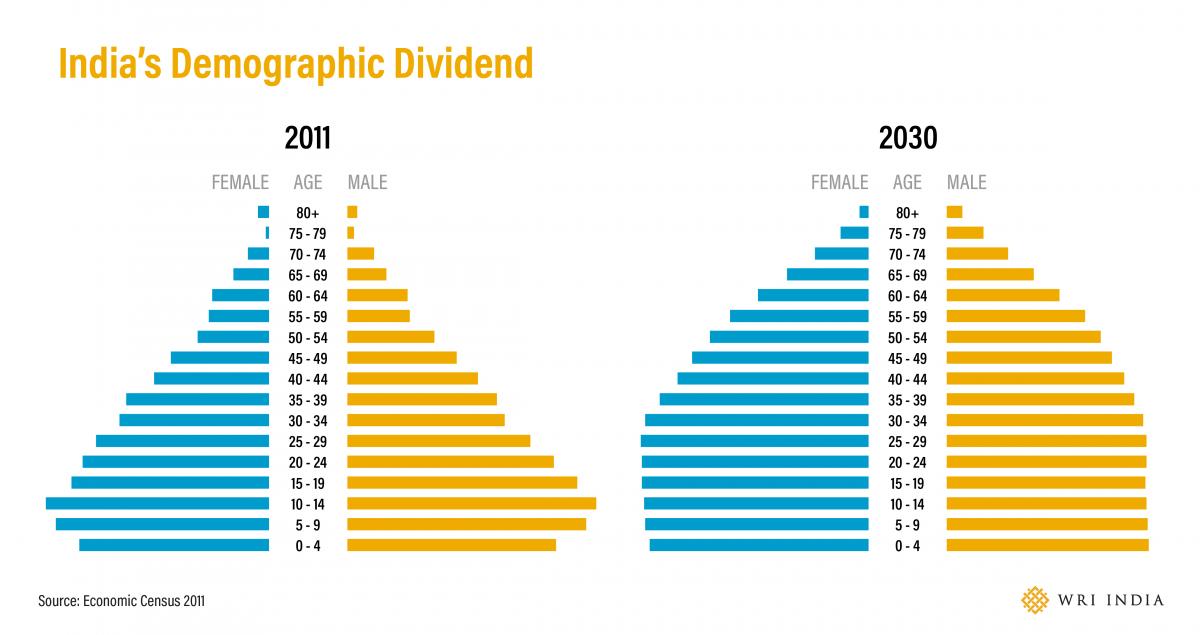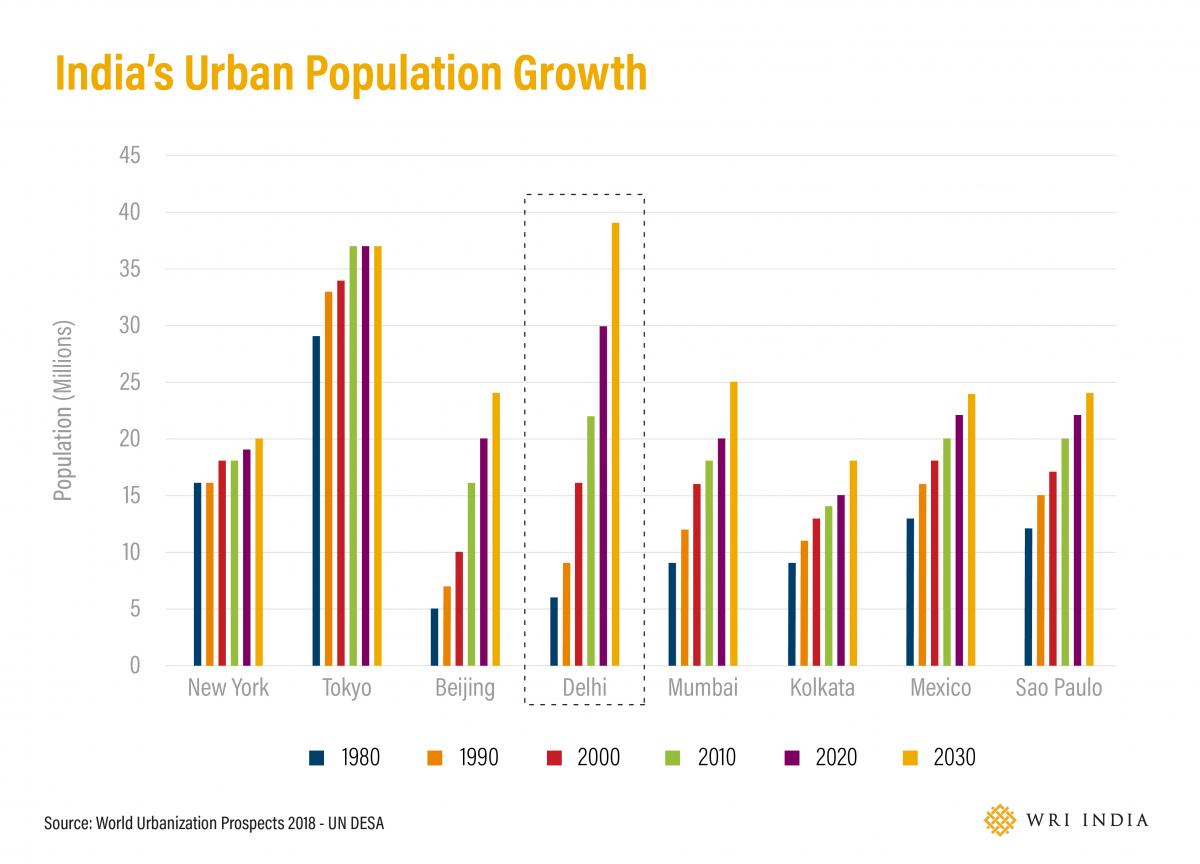
Seven unfolding stories of environment and development to shape India in 2021
On January 30, 2020 within two weeks of the World Health Organisation (WHO) declaring a pandemic worldwide, India reported its first COVID-19 infection. Subsequently, the first lockdown was announced on March 25. Close on its heels followed a mass migration of workers from parts of the country. This resulted in the displacement of nearly 10 million rural migrants and shortly after, the loss of millions of jobs. At the time of writing, India has more than 1.2 crore total reported cases and also has the world’s highest number of recoveries. Worldwide, there are over 13 crore cases, with US recording the highest caseload. Along with the raging pandemic, India witnessed extreme climate weather events. These put together made India among the countries that are most vulnerable to the fallouts of climate change.
Now as India fights a tough second wave of infections, the way forward after this unprecedented upheaval will define the course of the year ahead. With this background, it becomes essential to cast a glance at what the rest of 2021 holds. Jamshyd N. Godrej, Chairman of the Board of Godrej & Boyce Manufacturing Company Limited, gave openings remarks for the event. WRI India’s CEO, Dr. OP Agarwal addressed this from the lens of seven important stories worthy of our attention in 2021 in the Stories to Watch India event on April 6, 2021.
Vaccination and the Way Beyond
Vaccination in phases has been started in India, with healthcare and frontline workers, people over the age of 60 and now people over the age of 45 getting vaccinated. According to the government of India, India is fastest compared to the USA and China, which vaccinated 100 million in 89 days and 103 days, respectively. The country started nationwide COVID-19 vaccination on 16 January and so far, India has administered over 10 crore COVID-19 doses.
The recovery efforts from the fallout of the COVID-19 pandemic present India a chance to make systemic changes for sustainable development. The crisis has also demonstrated that governments and individuals are capable of strong action in the face of an overarching challenge. The prominent story to watch here would be if India will drive these policies further for systemic change?
In this respect, it is pertinent to note that in the Union Budget 2021, ₹350 billion was allocated for the health sector. The next big thing to look at will how India tides over the new surge in infections and then how we manage to vaccinate the poorest 30% of the population? Especially when the rural health infrastructure in India is facing major challenges including absence of the predictable, reliable power supply.
Working with Nature
While the country was battling a pandemic, a number of extreme weather events clouded India in 2020. Cyclones Amphan, Nisarga and Nivar caused immense damage; 125,000 acres of crops were destroyed by locusts; and as many as 10 states experienced floods. To avert such calamities, options like Urban Restoration are available. One prominent example of this is the conservation of the Vikhroli Mangroves in Mumbai. On these lines, it will be in the interest of all to make use of Nature Based Solutions (NBS). What will be important to note will be if these NBS will remain isolated initiatives or they will be adopted as widespread solutions.
Other solutions include restoration of wetlands and lakes and mainstreaming resilience into infrastructure planning. With emerging national narrative on urban climate action and disaster resilience, Indian cities have a window of opportunity to innovate and implement resilience solutions. However, there is a strong need to come up with a detailed roadmap to translate policy into action, scaling-up the proof of concepts, and mainstream resilience in the urban planning and management mechanisms at the national level.
This highlights the need for scaling up of these NBS. For example, it will be important in the coming years to focus on how Indian agriculture can shift from water intensive paddy and sugarcane to water prudent and sustainable crops. There is also an urgent need for a national level resilience framework, proof of concepts for evidence-based policymaking, and tools for integrating a resilience lens in the local urban planning, infrastructure development and governance processes.
Quest for a Better Life
India has one of the youngest populations in an ageing world. Around 90% of its population is under the age of 60, of which around 35% is under 19 years old. This young population ensures a potential addition to the working age group in the coming years. For such a young population, ensuring jobs is critical. India’s demographic dividend has a finite lifetime, therefore a lack of appropriate job opportunities for them can lead to social unrest.

Around 85% of the current Indian workforce is engaged in the informal sector. They lack access to drinking water, sanitation, health care, affordable transport and job security. Deep-rooted societal and economic injustices were exposed during the first few months of the pandemic, while the impact of the lockdowns itself directly fell disproportionately on the informal workers. Following this, it becomes pertinent to see if the informal workforce will benefit from Portable Social Security Systems; if there can be jobs for them made available closer to home; how the migrant workforce and overall, could COVID-19 help rethink India’s informal sector issues?
Solarisation in India
With evolving Renewable Energy (RE) ambitions, India is aiming to attain 175 GW of renewable energy which would consist of 100 GW from solar energy, 10 GW from bio-power, 60 GW from wind power, and 5 GW from small hydropower plants by the year 2022. India has also set an ambitious target of having 450 GW of renewable energy by 2030. On his recently concluded visit to India, US Special Presidential Envoy for Climate, John Kerry said that “India indisputably a world leader in deployment of renewable energy”. It is important to note that on India’s global leadership on issues like RE, along with a host of others, has been critical, including delivering COVID-19 vaccines to the world.
Going forward with these new ambitions, it will be interesting to see how putting up utility-scale solar power plants and supplying power from them to farmers could be beneficial. Energy access in rural areas became a key point of discussion during the pandemic. Additionally, it also exposed that there is increased potential for improved healthcare, education and decentralised job creation. What remains to be seen is if solar energy can empower rural India. With India’s energy demand set to increase by 165% by 2040, the story to watch is how agriculture, homes, livelihoods, micro enterprises and social infrastructure such as hospitals and schools will function better with less consumption.
Urbanisation: Growing Cities
The population residing in urban areas in India, according to the 1901 census, was 11.4%, increasing to 28.53% by the 2001 census, and is now currently 34% in 2017 according to The World Bank. According to a survey by UN, in 2030, 40.76% of country's population is expected to reside in urban areas.

There is rampant urban expansion outside primary municipal limits of cities. This begets the question if just a few efficient and connected cities can drive India’s high-growth ambition?
This also leads to other pertinent question about the preparedness of urban infrastructure and what happens when this current population doubles? With this background, it will be important to note if urban clusters can be a possibility, and how a transition to clean transport systems will help. Looking forward, will cities move towards greater decentralisation, with an emphasis on resilience? The future of clean fuels and adoption of cleaner mobility choices looks like the way ahead.
Building a new India: The Innovation story
With the current surge in innovation in India, platform governance can usher in an era of decentralised and personalised government services. These online platforms will also benefit from positive network effects, i.e., the additional value generated through robust interactions between different users and the freedom to innovate. Such low-cost solutions using local wisdom frugal innovation have helped boost innovation and quick adaptation for public service delivery.
Innovation in the space of public service delivery in India will benefit if the procurement process is focused on outcomes instead of product specifications. A bolder and prudent approach in procurement has worked extremely well for The Global Housing Technology Challenge (GTHC). This project launched with the setting of six cities, six technologies and six construction companies provide India a basket of new technologies to build cost effective houses in less time. The invitation to innovators to innovate on materials and construction processes was extremely important as 70% of the building stock in India is yet to be constructed.
Innovation will play a key role in taking India on the path of development. With 3,061 start-ups launched in 2020, what remains to be seen is if innovation will push for green jobs in 2021.
India Inc. leading climate action
India has ranked fifth among the countries surveyed for corporate commitments to Science-Based Targets (SBT), ahead of Germany and Sweden, according to a recent report. Godrej & Boyce committed to smarter energy use, pledging to double their energy productivity and implement an energy management system by 2030. India also saw various commitments to go carbon neutral by regional airports, rural panchayats, union territories and states.
India also figures in the top 10 for the second year in a row in The Climate Change Performance Index (CCPI) 2021. The CCPI analyses and compares climate protection across 57 countries (plus the EU as a whole) with the highest emissions. What then remains to be seen is how India will scale up its climate action and if 2021 see new pathways that position India as a global climate leader.
Going forward, India needs to prioritize and incorporate adaptation and mitigation measures into decision making at each level. India is one of the few countries on track to meet its Paris target, achieving 21% of its pledge to reduce emissions intensity of GDP by 33-35% by 2030. Prime Minister Narendra Modi has reiterated India’s commitment to climate action ahead of the COP26 summit this year in Glasgow.
India has to recognize that a local resource-based approach to infrastructure development can be a significant contributor to assisting citizens adapt to climate change while contributing to the economy. Community-based natural resource management programmes for water and land resource management in rural areas, promoting climate-resilient agriculture, and building a climate-proof rural infrastructure will ensure livelihoods and reduce emissions. But most of all, India must protect its biodiversity fiercely and strengthen its natural systems.
The content of this blog is based on the Stories to Watch India Edition 2021 presentation designed by Garima Jain and Manasi Nandkumar and with inputs from Rama Thoopal and Nitya Kaushik.